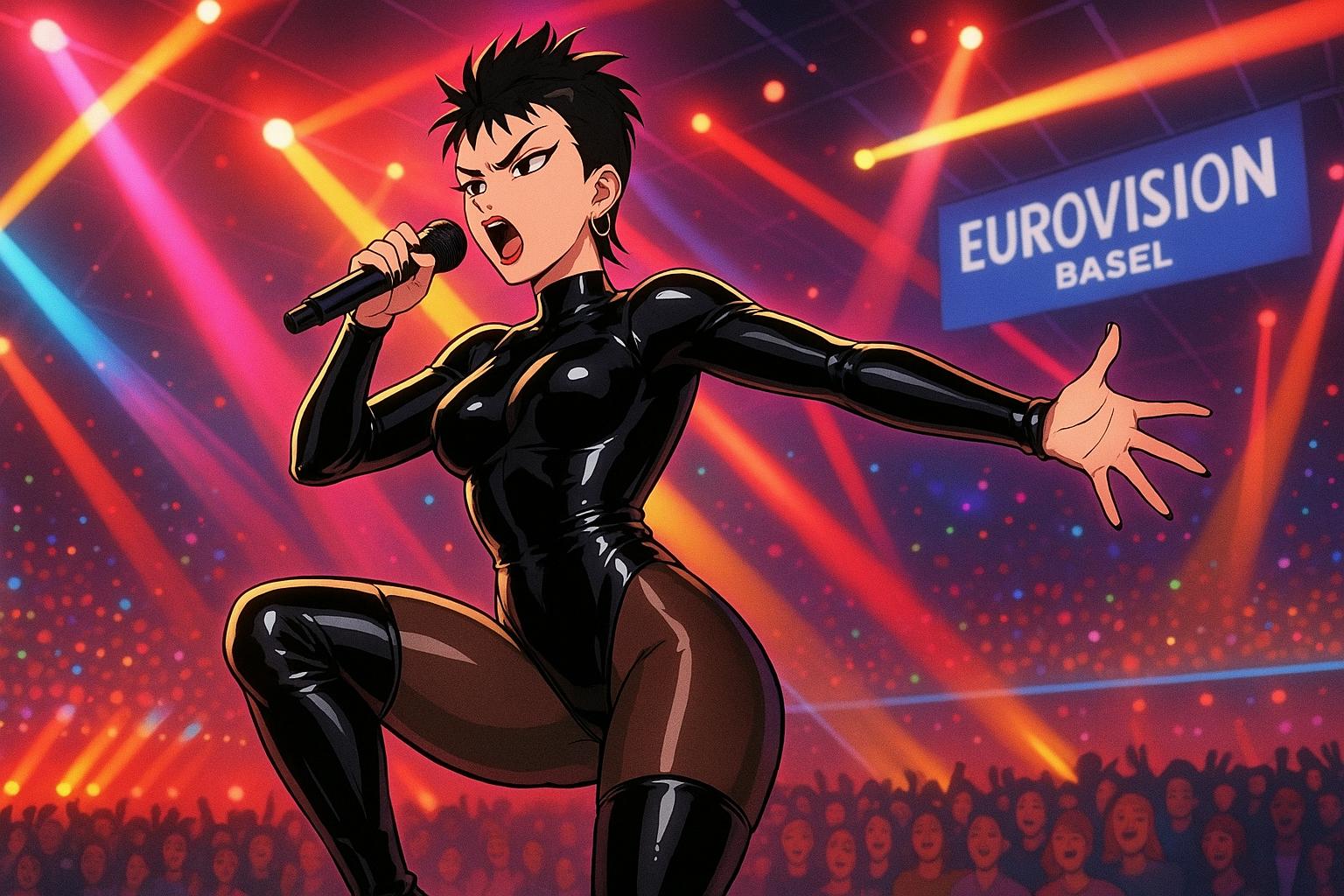The Eurovision Song Contest, renowned for its vibrant spectacle and boundary-pushing performances, faced significant backlash during this year’s edition held in Basel, Switzerland. As contestants showcased their artistry through an array of flesh-revealing outfits and provocative routines, the event sparked a vigorous debate regarding its suitability for a family audience. Notable performances from Finland, Malta, and Spain elicited widespread criticism on social media, with many suggesting that the contest has strayed too far from its entertainment roots.
Finland's Erika Vikman made headlines with her performance of "Ich Komme," a pop track that resonated with overtly suggestive lyrics and an eye-catching black latex ensemble. The provocative nature of her act, which included bold choreography, prompted social media users and even Finland's own president, Alexander Stubb, to express their discontent. Stubb voiced a preference for Sweden’s entry, KAJ, which is interestingly composed of Finnish artists, citing a desire for a less controversial representation of Finnish talent on the Eurovision stage. Speaking to a classroom during a school visit, he remarked, “If KAJ wins Eurovision, in the end, it is Finland that wins.” This stark commentary highlighted the disconnect between Vikman's performance and some national sentiment.
Erika Vikman, reflecting on the reaction to her performance, mentioned feeling disappointed by her president's comments and noted that Finland's cultural conservatism often clashes with her artistic expression. “Half of Finland hates me, half loves me,” she articulated, addressing the mixed reception of her unabashed performances. Furthermore, the European Broadcasting Union (EBU) reportedly reached out with requests for her to tone down the more lascivious aspects of her act, insisting that she alter her costume and choreography. Vikman expressed frustration, stating, “They want to cover my butt,” indicating that there were substantial discussions on what constitutes appropriate content for Eurovision.
Similarly, Malta's Miriana Conte drew attention with her dramatic performance wherein she removed a ruffled dress to reveal a striking leopard-print jumpsuit, complemented by high-energy dance moves. However, her entry faced its own hurdles; the EBU mandated changes to her song title due to its phonetic similarity to a vulgar term in English. Despite her initial disappointment, she adapted her performance, including eye-catching visuals that included a mouth-shaped backdrop and provocative choreography. Conte articulated her commitment to the spirit of Eurovision, stating, “We want to make sure that nothing distracts from the music and the message,” a sentiment that underscores the cultural diversity inherent in the competition.
Spain's entry added fuel to the fire of this ongoing discourse. Melody’s high-octane performance of “Esa Diva” featured outfit changes from a formal gown to a revealing leotard, ensuing further discussions about appropriateness for all age groups. Her dance routines, alongside provocative visuals, drew both acclaim and criticism, further igniting debate about the balance of artistry and family-friendliness in contemporary Eurovision performances.
The controversy did not end there. Performers from Armenia and Spain also attracted scrutiny for their bold stage presence. Armenia's Parg shocked viewers by appearing topless, showcasing his physique while conveying an assertive message through his artistic choices. This ensemble of performances has left many wondering whether Eurovision’s mission to celebrate diverse cultural expressions may be at odds with its appeal to a wider, and perhaps more conservative, audience.
As the Eurovision Song Contest continues to evolve, it is clear that discussions surrounding performance content and cultural boundaries remain crucial. While the event positions itself as a vibrant platform for artistic expression, the question of what constitutes an acceptable display in the name of entertainment continues to fuel debate among fans and critics alike. With voices from within participating countries—like that of Finland’s president—joining the discourse, it appears that the future of the contest will hinge on balancing bold artistic choices with the expectations of a global audience.
Reference Map
- Paragraphs 1, 2, 3
- Paragraphs 3, 4, 5
- Paragraphs 4, 5, 6
- Paragraph 6
- Paragraphs 4, 5
- Paragraph 6
- Paragraph 6
Source: Noah Wire Services
